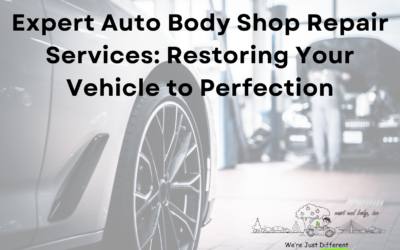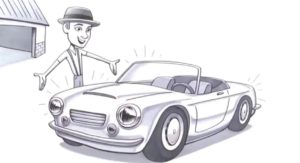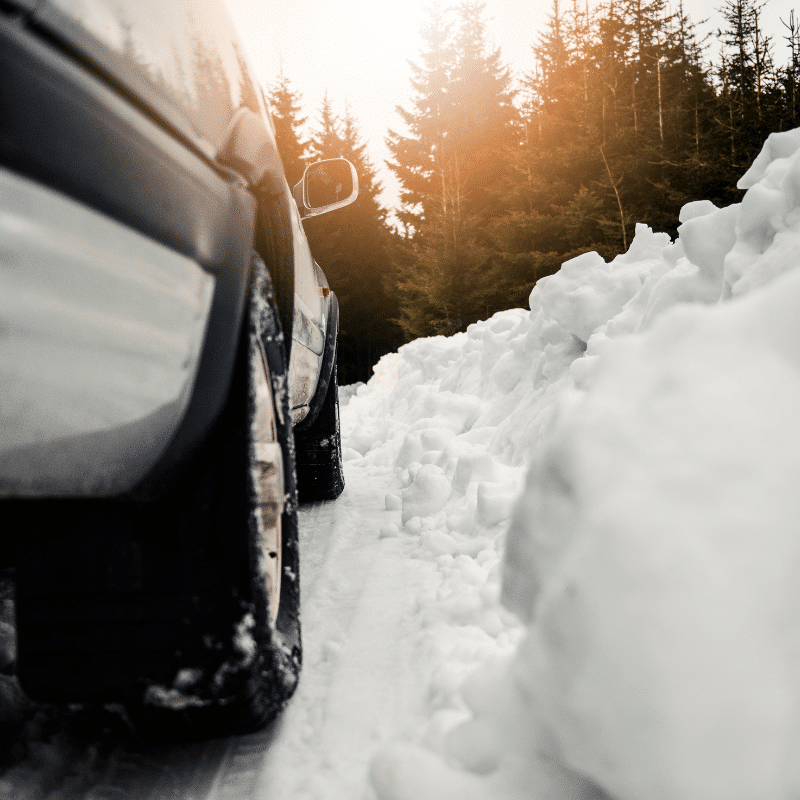
Driving in severe winter weather conditions can be frightening, to say the least. You never know when you will come up to ice, heavy snowfall or blinding blizzards. Even other vehicles can cause scary driving conditions.
According to the CDC, Every day, almost 3,700 people are killed globally in crashes involving cars, buses, motorcycles, bicycles, trucks, or pedestrians. Every year, 1.35 Million people are killed worldwide on roadways.
Drive Safe Speeds in Winter Weather
Drivers should always pay attention to their speed and follow the limit in all weather conditions.
Speeding is always considered dangerous, but when the weather conditions create hazards it becomes especially dangerous.
The NWHA recommend slowing from your normal speed, to at least 30%-40% slower when road conditions are unpredictable.
Essentials While Driving In Winter Months
You never know what can happen in the winter months. Here are some tips recommended by AAA.
– Always keep at least a half a tank of fuel in your car. This is recommended in case you become stuck or standed, you can stay warm in your running car.
– Avoid using cruise control. Using cruise control in snow and icy conditions can cause your car to lose traction.
– Check the tread on your tires regularly. Having good tread on your tires helps your traction.
-Keep an emergency supply of cold weather gear in your car. These items should include blankets, extra clothes, food, medications, water, a flashlight, ice scrapers and tire chains.
Since car accidents in the winter months are highly probable, finding the correct auto shop for auto body collision repair is needed.
At East End Auto Body Shop, the team is willing and ready to help driver’s get back on the road. Make them your choice after an auto accident in the winter months. The personalized, combined experience of the team at East End has your back.
With experience and repair options in:
- Auto body repair, Frame repair
- Collision repair, Auto painting
- Glass repair, Automotive detailing
- Auto mechanical repair, Automotive claims
- Insurance repair work, Auto body paint
“No other company is as committed to improving the way people & their vehicles are cared for following an accident than us!”
Contact the team at East End Auto Body today!
More than half of those killed are pedestrians, motorcyclists, or cyclists.
Here, we will go over tips for driving in the winter months and how to keep your family safe.
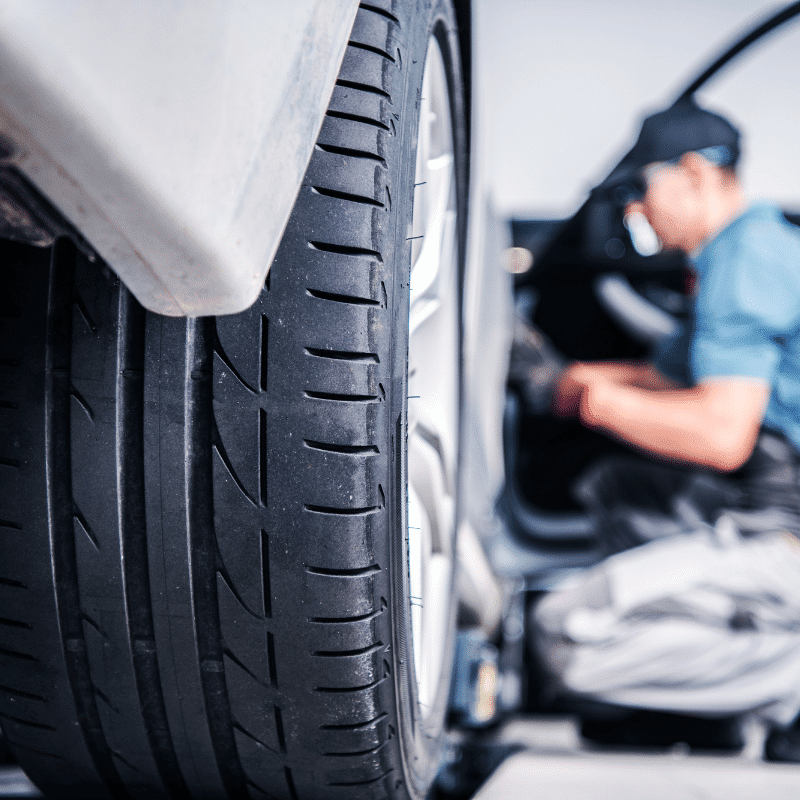
When driving in winter weather, or traveling through it, there are a few things you can do to prepare for your trip to make sure you are well equipped to deal with any situation you might encounter.
Service your vehicle
Servicing your car will extend your engine life, reduce fuel consumption, increase the safety of your vehicle, prevent wearing of moving parts, maintains road worthiness and improves resale value.
Check for recalls
NHTSA’s Recalls Look-up Tool lets you enter a Vehicle Identification Number (VIN) to quickly learn if your vehicle has a critical safety issue that has not been repaired, and how to get that repair done for FREE. Check www.nhtsa.gov/recalls.
Know your car
Read your vehicle’s manual to familiarize yourself with the safety features on your vehicle—such as antilock brakes and electronic stability control—and how the features perform in wintry conditions. When renting a car, become familiar with the vehicle before driving it off the lot.
Plug it in
For electric and hybrid-electric vehicles, minimize the drain on the battery. If the vehicle has a thermal heating pack for the battery, plug your vehicle in whenever it’s not in use. Start your vehicle and preheat the interior before you unplug your vehicle in the morning

Stock your vehicle
Carry items in your vehicle to handle common winter driving-related tasks, and supplies you might need in an emergency, including:
- Snow shovel, broom, and ice scraper
- Abrasive material, such as sand or cat litter, in case your vehicle gets stuck in the snow.
- Jumper cables, flashlights, and warning devices such as flares or emergency markers.
- Blankets for protection from the cold.
- Cellphone, charger, food, and any medications necessary.
Plan your travel and route
Before heading out, make sure to check the weather, road conditions, and traffic. Don’t rush through your trip, and allow plenty of time to get to your destination safely. And always familiarize yourself with directions and maps before you go, even if you use a GPS system, and let others know your route and anticipated arrival time.
Vehicle Checklist
Before embarking on your journey, make sure you check all of these items on your vehicle, and make sure they are all in optimal condition.
Battery
When the temperature drops, so does battery power. For gasoline and diesel engines, it takes more battery power to start your vehicle in cold weather. For electric and hybrid-electric vehicles, the driving range is reduced when the battery is cold. Have your mechanic check your battery, charging system, and belts, and have them make any necessary repairs or replacements. For hybrid-electric vehicles, keep gasoline in the tank to support the gasoline engine.
Lights
Check your headlights, brake lights, turn signals, emergency flashers, and interior lights. Be sure to also check your trailer brake lights and turn signals, if necessary.
Cooling System
Make sure you have enough coolant in your vehicle, and that the coolant meets the manufacturer’s specifications. See your vehicle owner’s manual for specific recommendations on coolant. You or a mechanic should check the cooling system for leaks, test the coolant, and drain or replace old coolant as needed.
Windshield Wipers
Washer Reservoir
You can go through a lot of windshield wiper fluid fairly quickly in a single snowstorm, so be prepared for whatever might come your way by ensuring your vehicle’s reservoir is full of high-quality “winter” fluid with de-icer before winter weather hits.
Wipers and Defrosters
Make sure defrosters and windshield wipers – both front and rear – work, and replace any worn blades. You may also want to consider installing heavy-duty winter wipers if you live in an area that gets a lot of snow and ice.
Floor Mats
Improperly installed floor mats in your vehicle may interfere with the operation of the accelerator or brake pedal, increasing the risk of a crash. Be sure to follow the manufacturer’s instructions for mat installation, use retention clips to secure the mat and prevent it from sliding forward, and always use mats that are the correct size and fit for your vehicle.
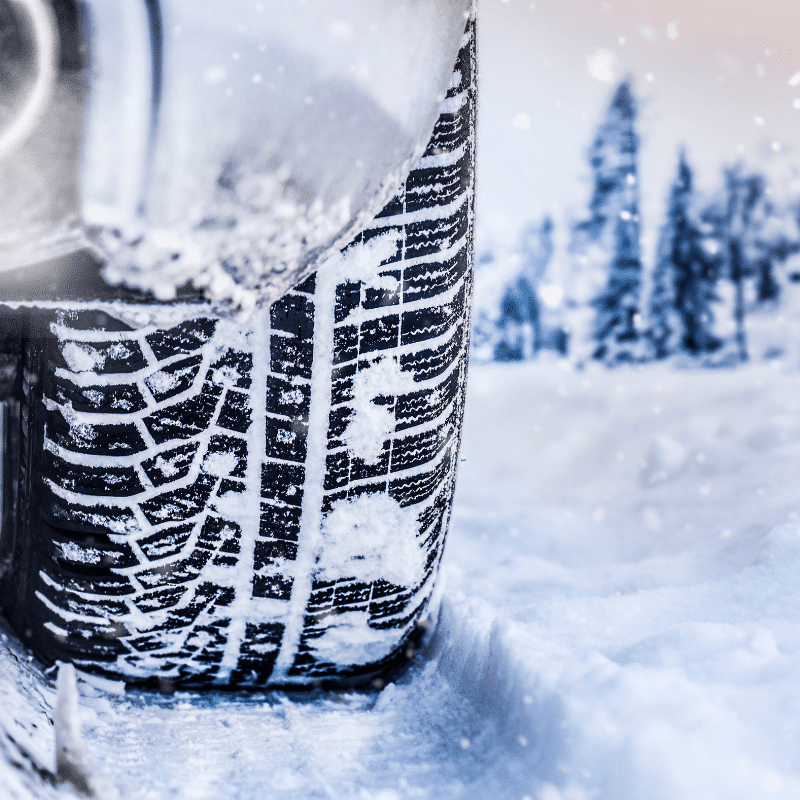
Tire Safety
As the outside temperature drops, so does tire inflation pressure. Make sure each tire is filled to the vehicle manufacturer’s recommended inflation pressure, which is listed in your owner’s manual and on a placard located on the driver’s side door frame. The correct pressure is NOT the number listed on the tire. Be sure to check the tires’ air pressure when they are cold, which means the car hasn’t been driven for at least three hours. Read through for safe tire tips:
Regardless of season, inspect your tires at least once a month and before long road trips. It only takes about five minutes. If you find yourself driving under less-than-optimal road conditions this winter, you’ll be glad you took the time. Don’t forget to check your spare tire.
You should inspect your tires for any damage or conditions that may require their replacement. Check the tread and sidewalls for any cuts, punctures, bulges, scrapes, cracks or bumps. In case you see any damage, take your vehicle to a tire service professional for further inspection.
If you plan to use snow tires, have them installed in the fall so you are prepared before it snows. Check out www.nhtsa.gov/tires for tire ratings before buying new ones, and look for winter tires with the snowflake symbol.
Look closely at your tread and replace tires that have uneven wear or insufficient tread. Tread should be at least 2/32 of an inch or greater on all tires.
Check the age of each tire. Some vehicle manufacturers recommend that tires be replaced every six years regardless of use, but check your owner’s manual to find out.
Tips for safe driving
Motor vehicle crashes are a public health concern both in the United States and abroad. These injuries and deaths are preventable. Whether you are a driver, passenger, cyclist, or pedestrian, take the following steps to stay safe on the road:
- Always use a seat belt on every trip, no matter how short. Be sure to buckle up whether you are in the front seat or the back seat of the vehicle.
- Make sure children are always properly buckled in a car seat, booster seat, or seat belt that is appropriate for their age, height, and weight, and ensure they are buckled in the back seat of the vehicle.
- Always wear a helmet when driving or riding on motorcycles, motorbikes, or bicycles.
- Do not drive while impaired by alcohol or drugs, and avoid riding with a driver who is impaired.
- Obey speed limits.
- Drive without distractions. For example, don’t use a phone to text, email, or access social media while driving.
- Be alert when crossing streets, especially in countries where motorists drive on the left side of the road.
- Ride only in marked taxis, and try to ride in taxis that have seat belts.
- Avoid riding in overcrowded, overweight, or top-heavy buses or minivans.
- Check the Association for Safe International Road Travel (ASIRT) website for information about driving hazards and road safety risks by country.
- Visit the country information page on the U.S. Department of State website for more information about road safety, overall safety, and security in every country of the world.
Related Articles
Auto Frame Repair Welding: Everything You Need to Know
When a collision damages your car, you need to check the frame first. The frame holds everything together — it’s the backbone of your vehicle. Even a minor impact can throw off the structure and compromise your safety. To fix it properly, you need a reliable and...
Car Frame Repair Shops Near Me: Why East End Body Shop Is Your Best Choice
You're likely facing a serious vehicle issue when you search for car frame repair shops near me. Frame damage isn’t just cosmetic—it’s structural and can affect your vehicle’s safety, alignment, drivability, and even its resale value. Whether you've been in a major...
Finding the Best Car Body Shops Near Me: Why East End Body Shop Is Your Trusted Choice
When you search for "car body shops near me," you're likely looking for a team of professionals who can restore your vehicle to its former glory. Whether you've been in an accident, want to fix cosmetic damage, or need a complete overhaul, finding a reliable shop is...
The Best Auto Body Shop Near Me: Top Tips to Find Reliable Car Repair in Huntington, West Virginia
Finding a trustworthy, top-quality auto body shop is essential for restoring your car to its original condition after an accident or even for routine maintenance. For those searching for "the best auto body shop near me" in Huntington, West Virginia, we've compiled an...
Expert Auto Body Shop Repair Services: Restoring Your Vehicle to Perfection
When it comes to getting your car back on the road after an accident or fender bender, choosing the right auto body shop repair service is essential. At East End Body Shop, we pride ourselves on delivering top-tier repair services that restore your vehicle's...
The Importance of Getting Multiple Car Repair Estimates
When it comes to car repairs, it's essential to make informed decisions that not only address the issues at hand but also protect your wallet. One crucial step in this process is obtaining multiple car repair estimates. By obtaining multiple estimates, you gain...





